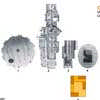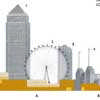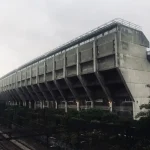London Waste Tower Building, Image, Architecture, Information, Design, Project
London Waste Tower : Architecture
Refuse Facility Building Proposal, England – design by Dow Jones Architects
3 Nov 2008
London Waste Building
Design: Dow Jones Architects
London Waste Tower
VISION
This report has been written to develop the objectives of the Mayor’s London Plan relating to waste management. In 2006/7, London produced over four million tonnes of municipal waste, of which 57% was sent to landfill, only 20% was recycled and 23% was incinerated. The Mayor’s intention is to dramatically change the way London deals with its waste, not just in terms of how it is treated but where that treatment happens. Waste will be sorted for recycling as well as composting, and new and emerging technologies will be introduced to deal with residual waste as an alternative to landfill and incineration. The ambition is to make London self-sufficient, rather than sending its waste to landfill outside the city. Waste is becoming a high-profile issue in the capital.
This report considers these new and emerging technologies being used today: anaerobic digestion and advanced thermal treatment (ATT) technologies for waste, such as gasification/pyrolosis and plasma gasification, all of which recover energy as part of the waste treatment process. This report explores how these technologies can be successfully integrated into our city in order to achieve a coherent and complementary set of waste treatment facilities to meet current and future needs, and what likely impacts this will have on the city.
Anaerobic digestion takes biodegradable waste and breaks it down in enclosed vessels, turning it into compost and a biogas rich in methane. ATT technologies take the residual waste unsuitable for recycling, composting and/or anaerobic digestion, and convert it into a syngas at high temperatures, leaving ash and char which can be used, for example, as an admixture in construction materials. The biogas and syngas produced by anaerobic digestion and ATT technologies can be converted into energy, providing local electricity and heat.
The London Plan establishes a framework for boroughs to manage their waste in a responsible and self-sufficient way, setting a target level of 85% to be reached by 2020. Its bigger ambition is to extend this to a community level, bringing waste back into the city so that we will be aware of it, and treat it responsibly.
By 2020, the London Plan anticipates that London will produce 4.6 million tonnes of municipal waste each year, of which 25% will be recycled, 20% composted, 3% can be treated with anaerobic digestion, and 6% treated by gasification. This will require an estimated additional 328 hectares of land by 2020. Existing waste treatment sites, which currently consist of sorting and recycling, will be combined with composting, anaerobic digestion and and ATT plants to form an integrated programme. It is anticipated that there will be a need for 25 anaerobic digestion plants and 11 gasification plants, equating roughly to two anaerobic digestion plants and one gasification plant for every three boroughs.
The ambition of this proposal is that these industrial processes, which are usually kept out of sight and out of mind, will be brought back into the city and, through thoughtful design, will turn waste into compost and energy for the benefit of the community.
Four design scenarios have been developed for the treatment plants which examine different types of site and scales of operation. The greater availability of land in the outer London boroughs suggests a large site which combines different waste treatment technologies, serving a group of boroughs. The inner London boroughs with restricted sites might develop a smaller single plant operating on a more local level. All these scenarios form part of a coherent strategy for the city which takes into account waste quantities, existing waste treatment sites and transport connections.
London Waste Tower Project images / information from Dow Jones Architects Nov2008
Location: London, England, UK
London Buildings
Contemporary London Architecture
London Architecture Links – chronological list
London Architecture Tours by e-architect
London Houses – Selection
eldridge smerin, Architects
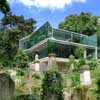
photo : Lyndon Douglas
Highgate Cemetery House
Plinth House, Salmon Lane, Limehouse
pH+
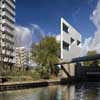
picture from architect
Plinth House
Ladderstile House
threefoldarchitects
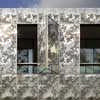
photo © Nick Kane
Ladderstile House
Comments / photos for the London Waste Tower Building page welcome



